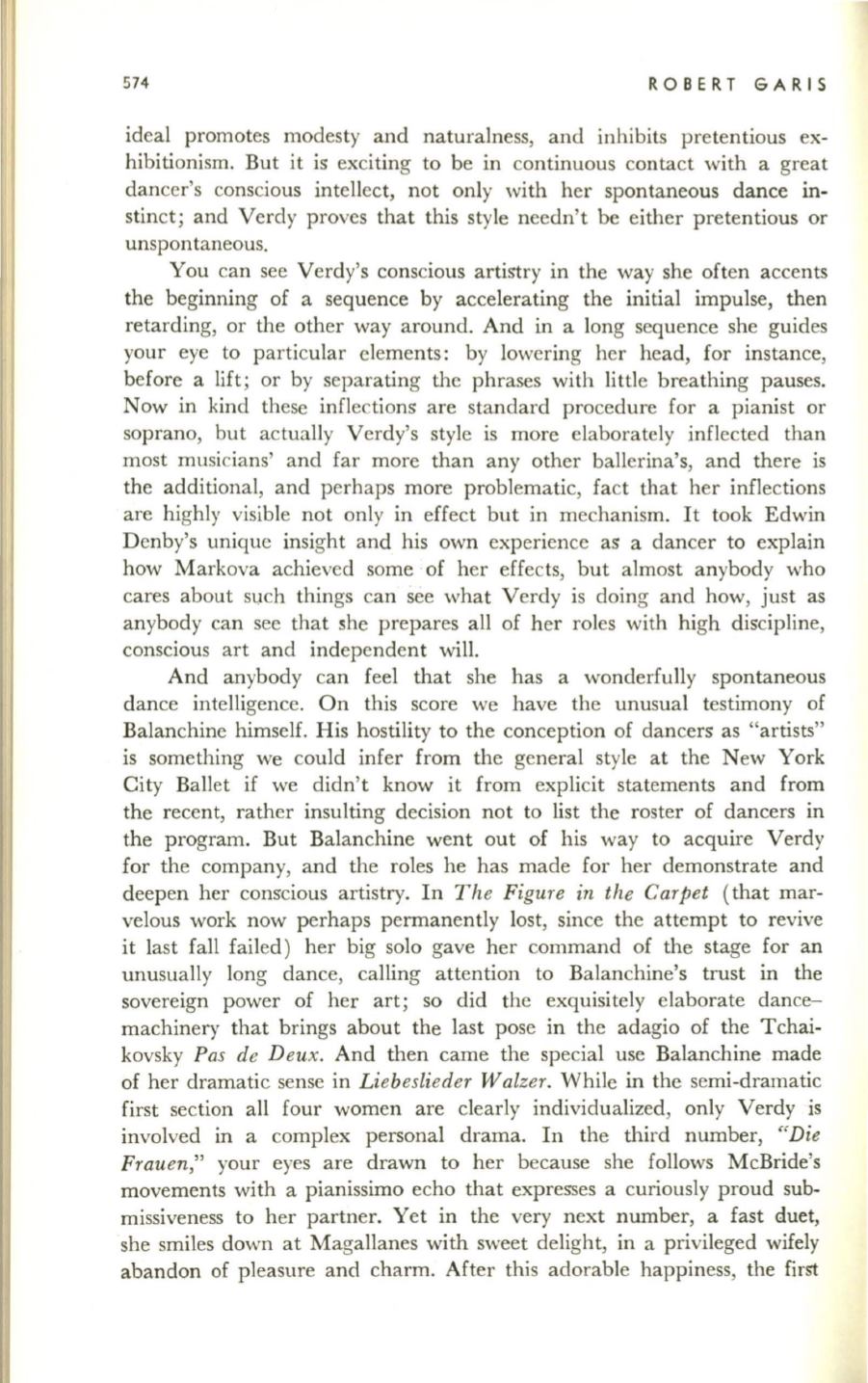
574
ROBERT GARIS
ideal promotes modesty and naturalness, and inhibits pretentious ex–
hibitionism. But it is exciting to be in continuous contact with a great
dancer's conscious intellect, not only with her spontaneous dance in–
stinct; and Verdy proves that this style needn't be either pretentious or
unspontaneous.
You can see Verdy's conscious artistry in the way she often accents
the beginning of a sequence by accelerating the initial impulse, then
retarding, or the other way around. And in a long sequence she guides
your eye to particular elements: by lowering her head, for instance,
before a lift; or by separating the phrases with little breathing pauses.
Now in kind these inflections are standard procedure for a pianist or
soprano, but actually Verdy's style is more elaborately inflected than
most musicians' and far more than any other ballerina's, and there is
the additional, and perhaps more problematic, fact that her inflections
are highly visible not only in effect but in mechanism. It took Edwin
Denby's unique insight and his own experience as a dancer to explain
how Markova achieved some ·of her effects, but almost anybody who
cares about such things can see what Verdy is doing and how, just as
anybody can see that she prepares all of her roles with high discipline,
conscious art and independent will.
And anybody can feel that she has a wonderfully spontaneous
dance intelligence. On this score we have the unusual testimony of
Balanchine himself. His hostility to the conception of dancers as "artists"
is something we could infer from the general style at the New York
City Ballet if we didn't know it from explicit statements and from
the recent, rather insulting decision not to list the roster of dancers in
the program. But Balanchine went out of his way to acquire Verdy
for the company, and the roles he has made for her demonstrate and
deepen her conscious artistry. In
The Figure in the Carpet
(that mar–
velous work now perhaps permanently lost, since the attempt to revive
it last fall failed) her big solo gave her command of the stage for an
unusually long dance, calling attention to Balanchine's trust in the
sovereign power of her art; so did the exquisitely elaborate dance–
machinery that brings about the last pose in the adagio of the Tchai–
kovsky
Pas de Deux.
And then came the special use Balanchine made
of her dramatic sense in
Liebeslieder Walzer.
While in the semi-dramatic
first section all four women are clearly individualized, only Verdy is
involved in a complex personal drama. In the third number,
"Die
Frauen,"
your eyes are drawn to her because she follows McBride's
movements with a pianissimo echo that expresses a curiously proud sub–
missiveness to her partner. Yet in the very next number, a fast duet,
she smiles down at Magallanes with sweet delight, in a privileged wifely
abandon of pleasure and charm. After this adorable happiness, the first


